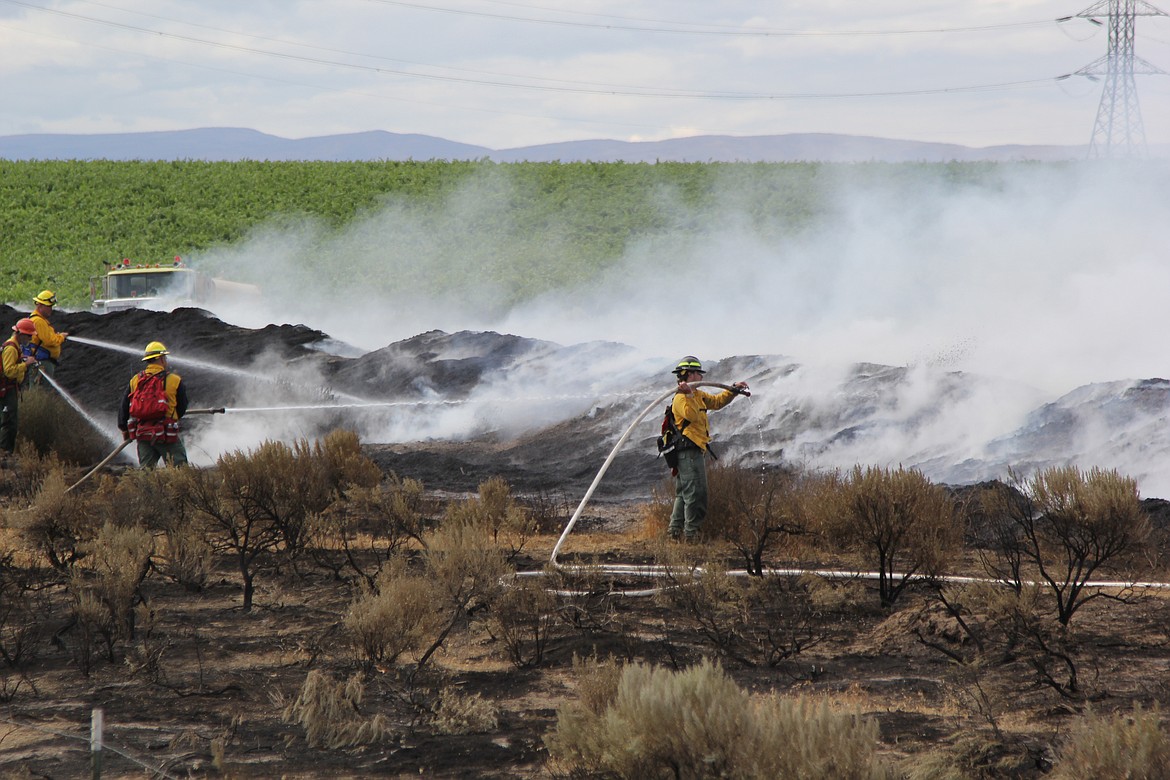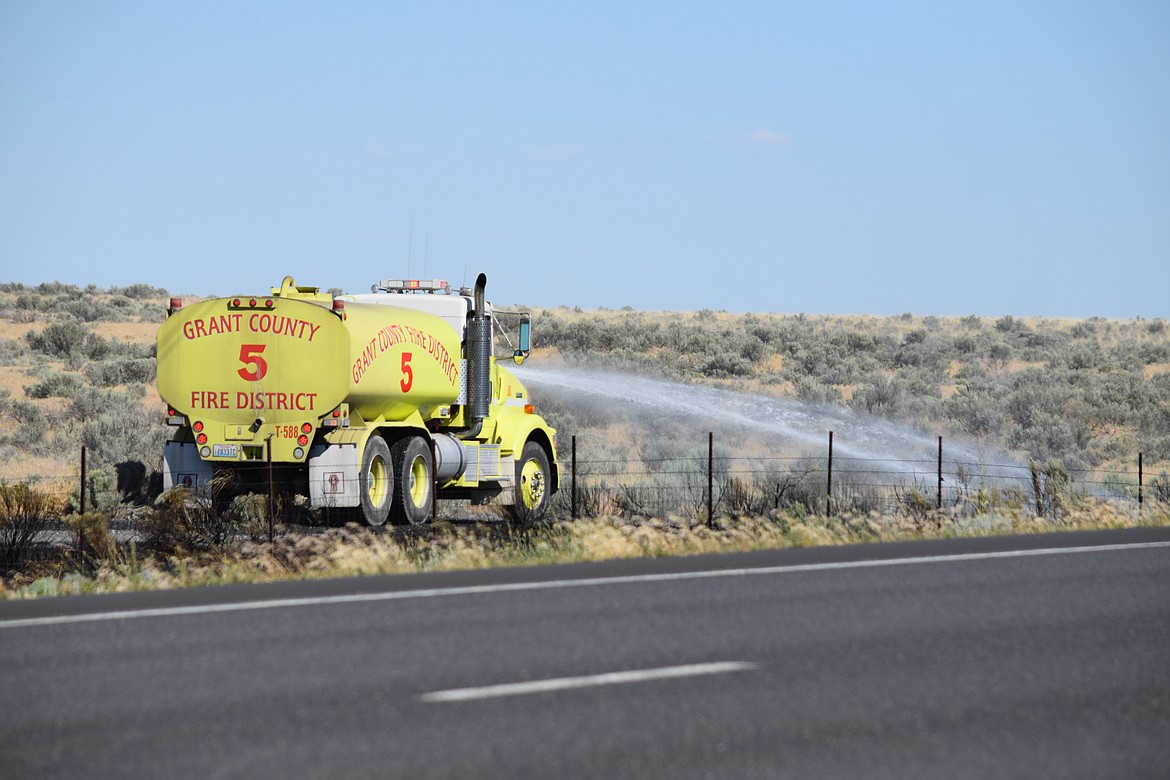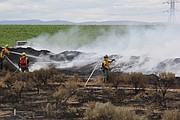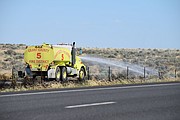Fire season is here, are we ready?
WASHINGTON - With how devastating the 2021 fire season was, particularly in the Pacific Northwest, it is important for residents to know what to expect this year, prevention measures and how to be prepared.
The 2021 Northwest Annual Fire Report, published in March 2022 by the Northwest Interagency Coordination Center, states how the record heat in the Western United States coupled with the early dry season and droughts created conditions that encouraged wildfires.
“Average temperatures during Fire Season 2021 were well above the 1895-2021 average for nearly the entire western United States,” the report states. “In many areas of the western United States temperatures were the warmest ever recorded for the three-month period June, July, and August.”
The report states there were 4,075 incidents in the Northwest and over 1.5 million acres were affected by fire - 125% of the ten-year average. There were 1,872 total fires in Washington alone, burning a total of 674,249 acres, with 334,752 of those acres being United States Forest Service land.
Alex Robertson, director of Fire, Fuels, Aviation for the United States Forest Service Pacific Northwest and Alaska regions said that a big reason for this is because their priority is protecting life and property over Forest Service lands.
“So with our partners who are part of what we call the Wildland Fire Response System, we prioritize together between agencies and then we allocate those resources to protect those highest values and a season like last year where we had a tremendous amount of fire on the landscape, more than we could ever handle, we concentrated our resources to help the communities and the people in protecting lives and property versus protecting Forest Service timber giants,” Robertson said.
What to expect this fire season
Grant County Fire District 13 Chief Jim Stucky said that while this season has been relatively calm so far, it has the potential to be worse than last year. He explained that while to many the unusually high amount of rainfall appeared to be a good thing, it allows grass and other highly flammable vegetation to grow taller than it was last year. While it was incredibly hot, the heat dried it out enough that it did not grow very tall.
“Up until now we’ve been very fortunate,” said Stucky. “But from now on, the potential for some major good fires (is very high) so people need to be extremely careful.”
Robertson echoed Stucky and said that they expect all that extra grass growth to dry out and become highly flammable in the coming weeks.
He also noted that because of the Pacific Northwest’s quiet start to the fire season, and a relatively busy start for areas in the Southwest, a lot of the Pacific Northwest’s resources were sent as mutual aid to the Southwest and are just now returning in time for when Robertson said they expect fires to start picking up.
What are prevention measures
“Since it is not a question of ‘if’ wildfires will occur but ‘when’, they will occur, the likelihood of human life and property loss is great and growing,” states Living With Fire: A Guide for the Homeowner. “Our ability to live more safely in this fire environment greatly depends upon our use of pre-fire activities.”
Stucky said some things to avoid that are potentials to spark fires include throwing cigarette butts out the window of a car, dragging chains on vehicles, parking in grass, cutting metal in areas that have grass, shooting in dry areas and building fires — there is a countywide burn ban in place.
Fire-Resistant Plants for Eastern Washington, a guide put together by the Washington State University Master Gardener Program, states that well-designed landscape around a home is key to reducing the risk of loss from a wildland fire. A well-designed landscape includes fire-resistant plants and a defensible space.
Stucky recommends a fire break of at least 100 feet if possible.
The guide explains that while there are no fire-proof plants; all vegetation is potential fuel for fire if conditions are right. By using fire-resistant plants, residents can create an additional line of defense for their home to mitigate the risk of loss due to fire. Some fire-resistant plants include annuals, bulbs and turfgrasses. Some common characteristics for plants recommended in fire prone areas include: Low growing, herbaceous plant parts, open configuration, high moisture content/succulent parts, water-like sap, broad leaves, low accumulation of dead materials and tight bark.
The report also recommends creating a defensible space by using masonry, gravel or stone walls to separate plant groups by breaking up fuel continuity.
Some options, according to the report, include using decorative rock, gravel and/or stepping stones in pathways, cement driveways, walkways, water features and retaining walls. It also says to replace bare, weedy, or unsightly patches of ground near the home with groundcover,
turf grass, non-turf grasses, rock gardens, vegetable gardens, and inorganic mulches.
Taking these steps not only protects homes from wildfire but also provides for the safety of firefighters when a wildland fire occurs, the report states. Stucky agreed.
“It allows us to concentrate on the fire itself instead of trying to protect the exposures and the house, barns or garages or whatever outbuildings or vehicles,” said Stucky.
Gregory Baruso, Deputy State Fire Marshal, encourages people to be vigilant and careful with campfires and grills. He said they advise people to check for burn bans and if you can have a campfire, move everything at least 10 feet away from any campfires, have a shovel or water handy to put out the fire and not to light a fire if there is wind.
Baruso said a lot of the preparation the Fire Marshal’s Office does for fire season is simply working to inform and educate people on the risks and dangers of fires.
“...But prevention is the biggest thing that our office takes care of and that’s what we try to get to folks and let them know, you know, just please be safe out there and be careful and be smart,” said Baruso.
How to be personally prepared
One way to be prepared is to be signed up for local emergency notification services. Emergency notifications for Grant County come through a service called Nixle. Alerts from the Grant County Sheriff’s Office may be sent for: Emergency evacuations, major road closures in Grant County and major evolving incidents which may impact the public. The Grant County Sheriff's Office has been using Nixle as its emergency communication tool since 2012 and is free for residents, according to the Grant County Emergency Management page.
To subscribe to get emergency notifications through Nixle, text GCSHERIFF to 888777 and/or to receive notifications via email, complete the subscription form at https://bit.ly/3cg8To9.
For those who don’t have a cell phone or struggle with text notifications, Grant County also has a Telephone Notification System where residents will be notified via a phone call if they are in an emergency area. To sign up for the TNS visit https://bit.ly/3AJQqdG.
How to Prepare for a Wildfire from the Washington Department of Natural Resources’ website states when a wildfire threatens your area, the best action to protect yourself and your family is to evacuate early to avoid being trapped. If there is smoke, drive carefully because visibility may be reduced. Keep headlights on and watch for other vehicles and fleeing wildlife or livestock.
It also states for residents to review their homeowners or renters insurance policy to ensure that they have adequate coverage for their property and personal belongings.
Kyle Foreman, GCSO Emergency Management Specialist, said it is a good idea to have a ‘go bag’ ready. A ‘go bag’ is something easy to carry like a backpack - if for one person - that includes a couple bottles of water, non perishable snacks like granola bars or canned food, a sturdy change of shoes and change of clothes, small travel size toiletries, medications, an extra pair of glasses if a glasses wearer, first aid supplies, flashlight and extra batteries, cell phone charger, a multi-tool and copies of important documents such as Social Security Number cards and birth certificates.
Foreman said ready.gov is a good resource and includes a similar checklist of items. He noted a larger supply kit will be needed if the ‘go bag’ is for a family. He said it is recommended to have one gallon of water per person per day for drinking and sanitation and to plan for several days but most evacuations in the Columbia Basin are short in duration, especially when it comes to wildfires. Foreman also said ‘go bags’ are customizable to residents' needs and preference.
With fire season upon the Pacific Northwest, it is important to be prepared for the possibility of a worse fire season than last year, what prevention measures can help mitigate fires and how to be prepared in case of an evacuation.
Rebecca Pettingill may be reached at rpettingill@columbiabasinherald.com.
Sources:
2021 Northwest Annual Fire Report
Living With Fire: A Guide for the Homeowner
Fire-Resistant Plants for Eastern Washington
Some additional resources suggested by USFS:









